10 Common Plants to Avoid (Plus Alternatives) in Kentucky
By Dan Stever
Plant selection is never an easy choice. There's the old adage of "right plant, right place." But what criteria make a plant the right choice?
Often plants are chosen based upon how pretty they are, which is why the same plants in flower sell faster than when they are not in flower. But the prettiness of a plant is not a good measure of its long term performance in the landscape.
The plant should also be the proper size for the location, adapted to the amount of sun exposure, tolerant of the soil conditions, and adapted to the climate conditions. Additional criteria to ensure the right plant choice is to consider pest and disease resistance.
Many of the most common landscape plants have serious problems, and they should be used with caution or avoided all together. Here is a list of 10 problematic trees and shrubs commonly found in Kentucky landscapes along with better alternatives.
Trees:
Ornamental pear - These invasive trees are still available at many retail centers. Aside from the invasive problem, the flowers smell bad, the branches easily break in wind and ice storms, and they get fire blight.
- Alternative - Serviceberry trees have attractive white blooms, edible fruit, and outstanding fall color.
Ash - Once a common street tree in Lexington and Louisville, the emerald ash borer (EAB) has devastated their populations both in cities and in forests. The presence of the EAB means ash trees are no longer viable plants for our landscapes. Be wary of anyone still selling ash trees in Kentucky.
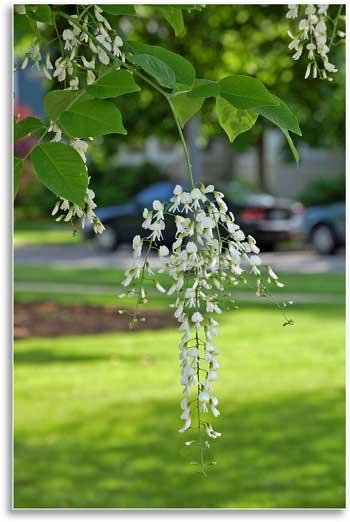
- Alternative - Kentucky yellowwood grows to a similar size as an ash tree, but it has large panicles of fragrant white flowers in the spring (see above).
Leyland cypress - Fast growing and elegant, these evergreen trees simply are not hardy in Kentucky zone 6 winters. They may survive for a few years, but eventually they will get zapped by a true zone 6 winter and either die or look bad enough they'll need to be removed.
- Alternative - "Green Giant" arborvitae is a vigorous grower with a stronger upright habit and is perfectly winter hardy. Or use our beautiful native red cedars.
Trees to use with caution:
Purple-leafed redbuds - The flowers of redbuds are true harbingers of spring. There are many varieties of Redbuds, and the purple leafed varieties are very popular. Their purple leaves make a striking addition to any landscape, but these trees are highly susceptible to a type of fungal wilt that has no cure. It causes die-back in branches, attracts secondary infections, and will eventually kill the trees. Properly locating purple-leafed redbuds in well drained non-irrigated sites will help in managing the disease. Often, trees come infected directly from the nursery. Look for malformed leaves which can be an indicator of serious problems (see below).
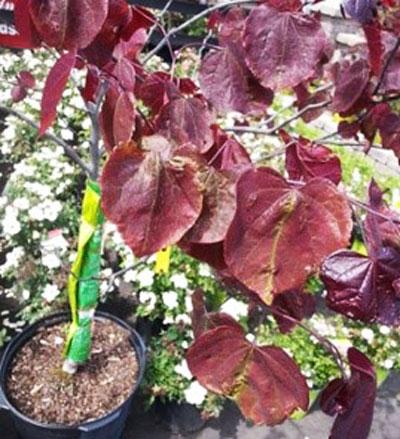
- Alternative - The straight species green-leafed redbud, for whatever reason, is more resistant to the root rots than the purple leafed varieties. For a small tree with purple leaves, try the Purple Filbert which has the bonus of edible nuts.
Crabapples - In springtime, crabapples are glorious (see below). Come summertime, they look ragged. Most crabapples are attacked by a disease called apple scab which causes them to defoliate in the summer. Another disease, fire blight, also manifests during the heat of summer in the form of dead branches. Annual applications of fungicide can control apple scab, but fire blight has no cure.
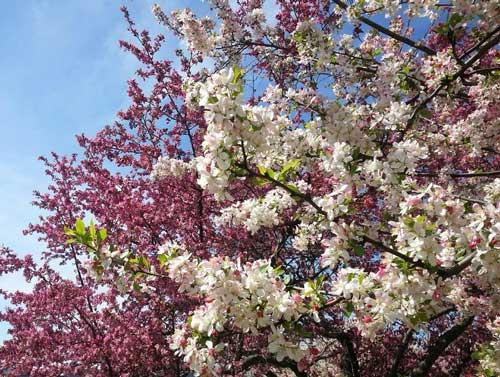
- Alternative - Thankfully plant breeders have developed varieties of crabapples that are resistant (not immune) to both apple scab and fire blight. Resistant varieties include Prairie Fire, Jewelberry, and Dolgo among others. Do your research and make sure the crabapple you purchase has resistance to both diseases.
Pin oaks - These majestic trees struggle in the Bluegrass. They often suffer from bacterial leaf scorch, which slowly kills them over a matter of years. Pin oaks can survive if located in irrigated lawns or wet areas. Due to the prevalence of the bacterial leaf scorch which has no cure, pin oaks are best avoided.
- Alternative - Shumard oak is a strong performer with excellent fall color.
Shrubs:
Dwarf Alberta spruce - This cute evergreen is a mainstay of foundation plantings in many homes and businesses. Unfortunately, dwarf Alberta spruce is attacked by spider mites more so than any other plant. Spider mites are notoriously difficult to control and require multiple treatments annually. The shrubs never quite recover and can also act as an infection point for the rest of the landscape.
- Alternative - The dwarf hinoki cypress is an elegant slow growing plant.
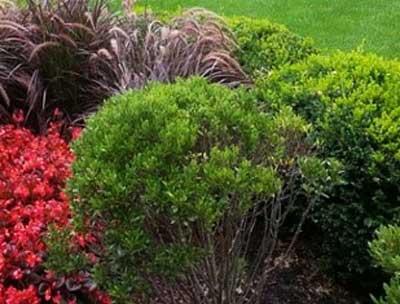
Inkberry hollies - This would be the perfect native shrub, except that it is highly prone to root rot. Most every inkberry holly in Kentucky shows signs of infection, and they die a quick death. Late stages of decline show as large dead areas in the shrub (see above). Fungicides do not always work as some of the root rots have no cure.
- Alternative - Use another native holly, winterberry holly. It may not be evergreen, but it provides an awesome show of color all winter long.
Shrubs to use with caution:
Knockout Roses - For decades, no flowering shrub has been more popular. But a recent virus, called Rose Rosette Disease, is spreading quickly. It deforms the plants and flowers eventually leading to death. If a plant is found with this virus, it is best to remove and destroy the plant before the infection spreads.
- Alternative - It is difficult to find a perfect replacement for Knockout Roses, but several hydrangeas come close. The oakleaf hydrangea "Ruby Slippers" or panicle hydrangea "Fire Light" are among several varieties with large blooms that fade to deep red.
Azaleas - A true classic landscape plant. Unfortunately, azaleas struggle in the Bluegrass. Our soils are not acidic enough for them to thrive and they suffer in our heavy clays with root rots, and the leaves are attacked by lacebugs. Azaleas can be grown successfully, but they require a lot of work, site prep, and diligence.
- Alternative - Another native spring bloomer, Fothergilla (see below) has fragrant white bottlebrush flowers and lovely fall color. Several varieties are available with blue foliage as well.
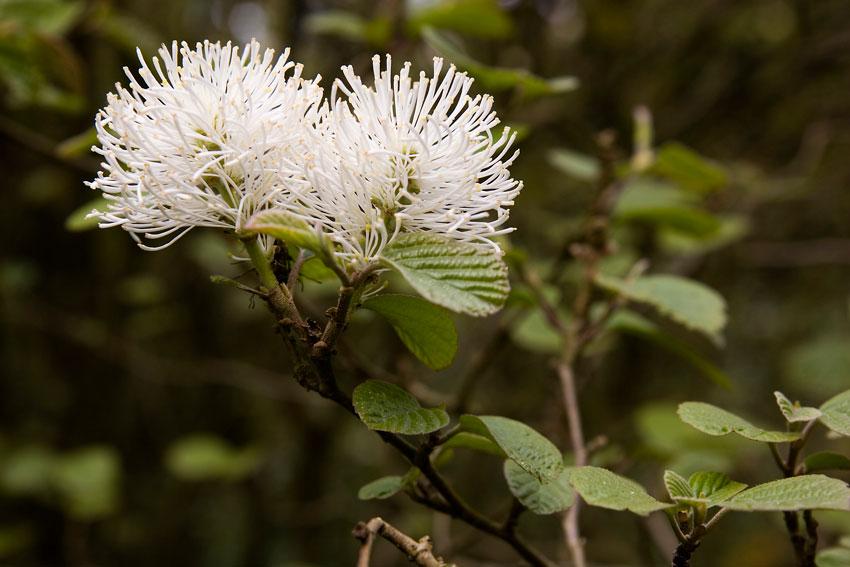
Photography
- Close-up of yellowwood flowers (Flickr - Tom Gill, CC)
- Purple-leaf redbud with malformed leaves (Dan Stever)
- Crabapple flowers(Dan Stever)
- Dwarf hinoki cypress (Dan Stever)
- Fothergilla flowers (Wikimedia)
About the Author
Dan Stever is the Chair of the LFUCG Tree Board and works as the Director of Business Development & Senior Horticulturist for Lexington Lawn & Landscape.
